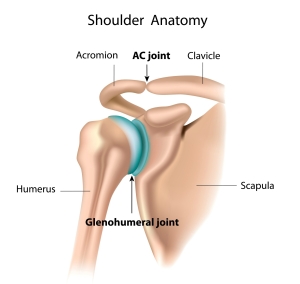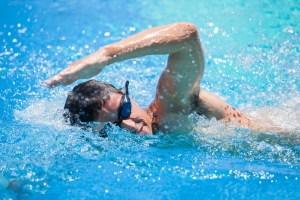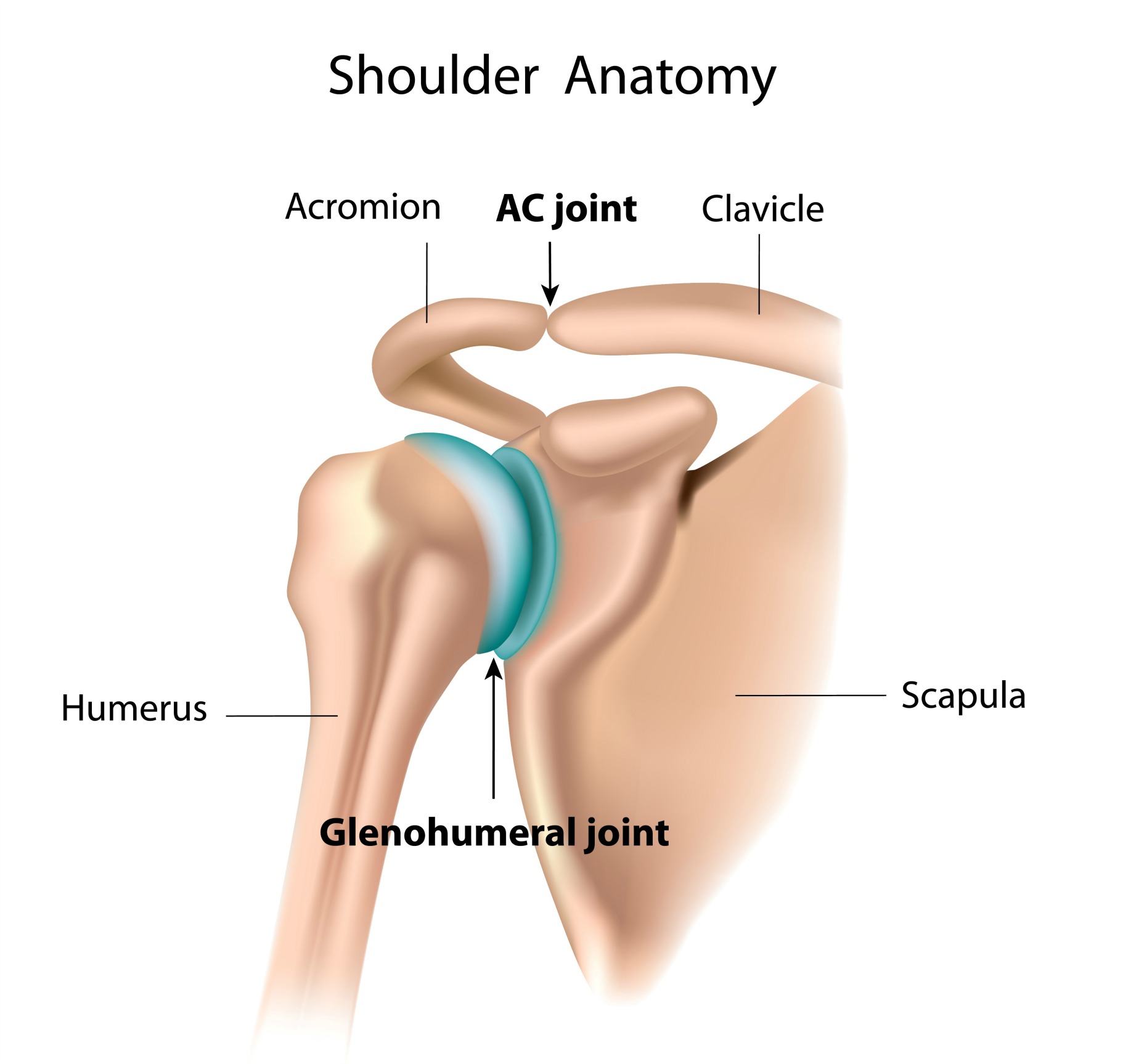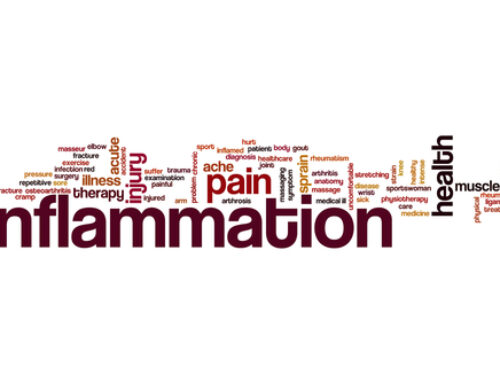Have you experienced pain in the front of your shoulder where your arm attaches to your chest? Patients often experience pain in this area when they perform specific motions with their arms, such as reaching behind their head. Sometimes this pain can be so intense that it restricts individuals from performing normal daily activities, which require overhead motion, such as reaching a high cabinet. The culprit for this debilitating issue could be Impingement Syndrome of the shoulder.
What is the cause of Impingement Syndrome?
![]()
Traditionally, Impingement Syndrome is thought to be primarily due to the overuse of the shoulder, from activities such as pitching in baseball, old age, or from a previous shoulder injury. The pain most people feel at the AC joint is from the supraspinatus tendon becoming constantly irritated by contact on an anatomically normal bony projection of the scapula called the acromion. If the patient continues to use the shoulder without correcting the problem, the tendon can become frayed like an old piece of rope, which leads to longer recovery time and possible surgery.
Impingement syndrome is caused by a muscle imbalance. Either the muscles, which normally pull the humerus downward, are not working correctly, or the muscles that pull up, are too strong. The humerus then slides upward, pinching the supraspinatus tendon against the acromion.
Take Swimmers For Example:
Swimming has been heralded as the ultimate exercise. Phrases such as “no impact” or “stress free to your joints” don’t always apply to swimmers. Interestingly, shoulder pain causes Olympic and Senior National swimmers to miss training and events 35% of the time.
Think about the physical toll on a competitive swimmer. During the average 2-hour training session, the athlete may swim about 6,000-7,000 yards (or 3.5 – 4 miles). That wo uld equate to 1,000,000 stroke cycles per year. Females could possibly have an additional 660,000 stroke cycles per year because they generally have shorter arm strokes. Swimming selectively strengthens the anterior chest musculature as well as the internal rotators of the shoulder (such as the latissimus dorsi,) leaving the external rotators rather weak in comparison. This muscle imbalance, in conjunction with the repetitive microtrauma due to the nature of training, will commonly cause Impingement Syndrome.
uld equate to 1,000,000 stroke cycles per year. Females could possibly have an additional 660,000 stroke cycles per year because they generally have shorter arm strokes. Swimming selectively strengthens the anterior chest musculature as well as the internal rotators of the shoulder (such as the latissimus dorsi,) leaving the external rotators rather weak in comparison. This muscle imbalance, in conjunction with the repetitive microtrauma due to the nature of training, will commonly cause Impingement Syndrome.
Test Yourself For Impingement Syndrome.
Test yourself for Impingement Syndrome by performing an abduction test. Raise each arm independently to the side, checking to see if you can get your elbow next to your ear smoothly and without pain or great restriction. Failure of this test sets you up for multiple injuries not limited to Impingement Syndrome.
Neck pain is a common derivative of a failed shoulder abduction test. When the motion cannot happen at the shoulder, the neck muscles compensate by elevating the entire shoulder blade in order to accomplishdaily activities. This lifting happens with every raise of the arm and overworks the neck musculature and leads to neck sprain, strain, or even headaches that throb at the base of the skull. Most likely, the culprit is longstanding poor head and shoulder posture. Slouching the head and shoulders forces the compensation pattern at the shoulder blade, which trains your brain to cause injury instead of functioning properly
Most common treatments for Impingement Syndrome:
Commonly recommended treatment for shoulder pain is the use of NSAIDs, such as aspirin and ibuprofen. Unfortunately, the side effects of the treatment far outweigh the potential benefits. A study in 1999 stated, “60 –100% of patients on NSAID therapy for only 1 –2 weeks develop submucosal hemorrhage, erythema, superficial erosions, or increase fecal blood loss.” In addition to this, when considering the true cause of Impingement Syndrome, it is easy to see that use of these drugs address the pain, but it does not fix the underlying problem.
Cortisone injections may decrease pain for a few weeks, but it generally does not address the primary cause. Multiple studies question the safety of the injections on the grounds of possible suppression of collagen formation, granulation of tissue, and release of noxious or harmful chemicals from damaged cells, which will limit the body’s ability to heal itself. Furthermore, surgery can be recommended for some patients who do not respond to 6 months of conservative care. The procedure generally includes shaving down the acromion process of the scapula. The estimated recovery time from a shoulder surgery is 4 – 6 months.
The BEST treatment for Impingement Syndrome:
The first treatment option should be one that is the least invasive and the most cost effective. The best treatment should be considered as the one that yields the fastest results. Luckily, Active Release Technique fills both of these criteria. ART is considered the “Gold Standard” of soft tissue techniques; it is the most sought after treatment by world-class athletes and other individuals looking for quick results. ART is so precise that it specifically addresses over 300 soft tissue structures in the body, based upon their biomechanical actions and orientation in the body.
fills both of these criteria. ART is considered the “Gold Standard” of soft tissue techniques; it is the most sought after treatment by world-class athletes and other individuals looking for quick results. ART is so precise that it specifically addresses over 300 soft tissue structures in the body, based upon their biomechanical actions and orientation in the body.
How does Active Release Technique permanently fix Impingement Syndrome?
As stated before, Impingement Syndrome is commonly caused by previous injuries and overuse, which lead to scar tissue build-up within the soft tissues surrounding the shoulder. The problem with scar tissue is that when it is being laid down, it occurs in a haphazard fashion causing adjacent structures to stick to one another. This means one muscle might be stuck to other muscles, causing a dysfunction in the shoulder biomechanics, ultimately leading to Impingement Syndrome. Providers of this type of soft tissue treatment are trained to feel abnormal texture and tension within muscles, ligaments, tendons, and nerves. This leaves these structures in the optimum state for strength training, which is the best long-term treatment for any type of injury. Patients often experience a dramatic improvement within 4-6 treatments. The benefits of ART are increased when used in conjunction with joint mobilization/manipulation and therapeutic exercises. ART is so effective that it is used on U.S. Olympic Teams, Ironman participants, and professional teams. As a chiropractor, I highly endorse this treatment form.
For more information on the benefits of Active Release Technique and to set up an appointment in our Roanoke, Virginia office, please call 1-540-344-1055
Stop by our store this week to receive 10% off Curcumin and Biofreeze!

Dr. Daryl Rich, DC, CSCS






